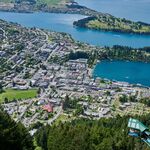Eglinton will be quickly over capacity. When Miller introduced TC it was based on a 2030 population of 3 million. Well Toronto has already passed that threshold and is growing at 70,000 a year bringing it closer to 4 million by 2030 and the GTA is also growing much faster than anticipated.
Eglinton will quickly be over capacity; with their initial 2 car train setup.
Then they will easily add 3 car trains to it, as they designed it to be, and it will no longer be over capacity.
There is plenty of un-used platform at the launch of the Crosstown.
Then, if capacity is still an issue, you can convert to 2 full length Alstom trains, which have more total capacity or have Bombardier convert the 3 car, 5 segment LRTS to 2 7 segment LRTs, which both affords more capacity (less space wasted between couplings, like the Toronto Rockets)
Then, if capacity is STILL an issue, the underground stations have been designed to be expandable to 4 car train lengths. (Or 3 full size Alstom LRTS) At the end of each platform in the station box are storage areas, which can be blown out to lengthen the platform.
This would require either having 4 car trains only operate in the tunnels, short turning, or lengthening the platforms on the above ground sections, which is expensive but feasible.
Capacity will not be an issue.




